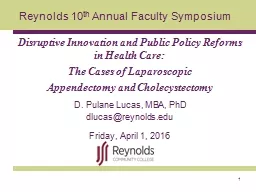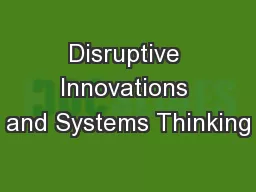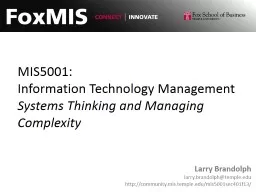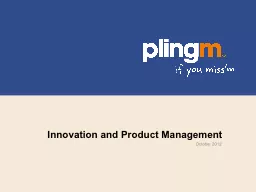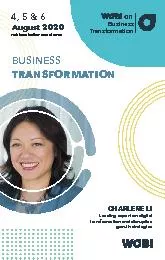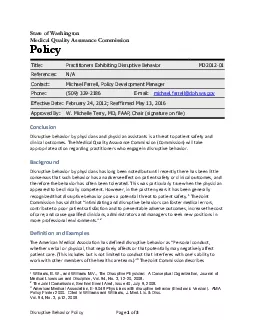PPT-Disruptive Innovation and Public Policy Reforms in Health Care:
Author : debby-jeon | Published Date : 2019-06-20
The Cases of Laparoscopic Appendectomy and Cholecystectomy D Pulane Lucas MBA PhD dlucasreynoldsedu Friday April 1 2016 Reynolds 10 th Annual Faculty Symposium
Presentation Embed Code
Download Presentation
Download Presentation The PPT/PDF document "Disruptive Innovation and Public Policy ..." is the property of its rightful owner. Permission is granted to download and print the materials on this website for personal, non-commercial use only, and to display it on your personal computer provided you do not modify the materials and that you retain all copyright notices contained in the materials. By downloading content from our website, you accept the terms of this agreement.
Disruptive Innovation and Public Policy Reforms in Health Care:: Transcript
The Cases of Laparoscopic Appendectomy and Cholecystectomy D Pulane Lucas MBA PhD dlucasreynoldsedu Friday April 1 2016 Reynolds 10 th Annual Faculty Symposium 1 Introduction. Mr Simon Potter. Overview. Disruptive Healthcare Innovation Initiative. Personal Introduction. Royal Academy of Engineering’s first Visiting Professor in Medical Innovation. Medicine. Design & Innovation Management in Automotive sector (Jaguar). David Minton . Director of The Leisure Database Company. airbnb. Allows you to rent unique accommodation from local hosts.. Airbnb has over 800,000 rentals.. Airbnb has recently partnered with the Rio 2016 Olympics to offer 20,000 rentals to the cities guests.. A Guide to Promoting Competition Reforms in Key Sectors . for Greater Public Welfare in Developing Countries. CUTS International, 13. th. October (2015), Lusaka. “. Strong . competition policy . is not just a luxury to be enjoyed by rich countries, but . Odenda. Lumumba. Kenya Land Alliance. Community Land & Land Reforms. Review of Land Reforms between 1945 & 2015. There have two types of Land Reforms to debate i.e.. Traditional Land Reforms undertaken before 1990s. How the masses change public policy. Outline. C.B. Macpherson’s Models. Frances Fox . Piven’s. Disruptive Power. Macpherson’s Analysis. Main forces of change. Ethical concerns. Forces of Change. MIS5801: Cali, Colombia. Richard Flanagan. (ryflanag@temple.edu). Adapted . fronm. material by . Schuff. , . Mandviwalla. , Johnson, and . Wattal. on. What do these have in common?. Disruptive Innovation Theory. 1. What is Strategy?. 2. Strategy is about creating a . sustainable competitive advantage. Sustainable advantage occurs only when you do. . different activities. . than your competitors, . or. when you do the. n . T. he . W. orkplace. Behaviors that undermine a culture of safety and quality . Martha E. Brown, MD. PRN Associate . Medical Director. And. UF . Associate Professor of Psychiatry. Addiction Medicine . Systems Thinking and Managing Complexity. Larry Brandolph. larry.brandolph@temple.edu. http://community.mis.temple.edu/mis5001sec401f13/. Disruptive Innovation Theory. Low-end. Quality increasing faster than need. October 2012. My background. Magnus. . Bergman. M.Sc. . KTH, Aerospace . Engineering. , 1987. Ph.D. in . Physics. , INP Toulouse, 1990. Post-Doc. KTH NADA, 1990-1994. Co-founder. , . Parallel. Consulting Group, 1992 (. TRANSFORMATIONTransformation The 100% digital event by Charlene Li and WOBI distributed over three sessions in three days, in which Charlene, a leading expert on digital transformation and disruptive Page 1of 3State of WashingtonMedical Quality Assurance CommissionPolicyTitlePractitioners Exhibiting Disruptive BehaviorMD2012-01ReferencesN/AContactMichael Farrell Policy Development ManagerPhone509 Prof. Lewis B Dzimbiri. Professor of Public Administration. University of Malawi. Chancellor College. ZOMBA. Broad presentation outline. Aims and rationale of public sector reforms in Africa and Malawi. Experience the best eye care center in Pune. The best clinics for your eye health, include the prestigious Dr. Sonalika Eye Clinic. At Hadapsar, Amanora, Magarpatta, Mundhwa, Kharadi Rd, Viman Nagar, Wagholi, and Wadgaon Sheri
Download Rules Of Document
"Disruptive Innovation and Public Policy Reforms in Health Care:"The content belongs to its owner. You may download and print it for personal use, without modification, and keep all copyright notices. By downloading, you agree to these terms.
Related Documents

